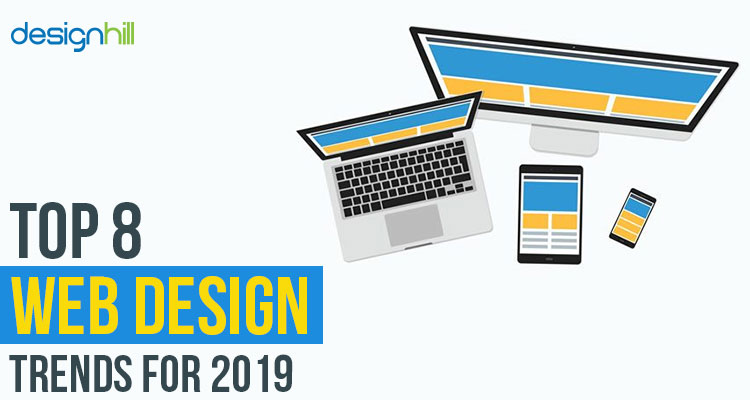Fascinated In Finding Out Just How Internet Site Design Has Developed Throughout The Years? Discover The Journey From Fundamental, Uncomplicated Layouts To User-Centric User Interfaces That Prioritize The Site Visitor'S Experience
Fascinated In Finding Out Just How Internet Site Design Has Developed Throughout The Years? Discover The Journey From Fundamental, Uncomplicated Layouts To User-Centric User Interfaces That Prioritize The Site Visitor'S Experience
Blog Article
Content Writer-Lamb Harding
In the past, internet sites were simple and concentrated on info. Navigation was direct, and style was for desktops. Now, user experience is key. Data guides designs for easy navigation. Responsive formats match various devices. Today, dark mode reduces stress, and minimal menus enhance navigating. Interactive functions involve individuals, and vibrant visuals stick out. AI combination boosts involvement. See exactly how style has actually developed to enhance your on the internet journey.
Very Early Days of Website Design
In the very early days of web design, simpleness preponderated. Web sites were fundamental, with minimal colors, font styles, and designs. The emphasis was on offering details rather than fancy visuals. Individuals accessed the net via sluggish dial-up connections, so rate and functionality were key.
Navigating menus were straightforward, usually located on top or side of the web page. Sites were designed for desktop, as mobile surfing wasn't yet widespread. Content was king, and designers focused on easy readability over intricate design elements.
HTML was the key coding language used, and designers had to work within its restraints. Computer animations and interactive features were marginal contrasted to today's standards. Sites were static, with little vibrant material or tailored individual experiences.
Surge of User-Focused Style
With the evolution of site layout, a shift towards user-focused layout principles has come to be significantly famous. Today, creating sites that focus on customer experience is vital for engaging site visitors and attaining business goals. click this over here now -focused style entails recognizing the requirements, preferences, and actions of your target audience to customize the internet site's format, content, and features as necessary.
Developers now carry out extensive research study, such as user studies and use screening, to collect understandings and feedback straight from users. https://messiahauoic.mybuzzblog.com/9447614/spark-your-online-existence-by-picking-the-suitable-local-seo-service-provider-for-your-business-find-out-how-to-make-the-ideal-option -driven approach helps in producing user-friendly navigation, clear calls-to-action, and aesthetically attractive user interfaces that resonate with visitors. By putting the customer at the facility of the layout process, internet sites can deliver a more tailored and enjoyable experience.
Responsive design has also emerged as a vital element of user-focused design, making certain that sites are enhanced for numerous gadgets and screen dimensions. This versatility improves ease of access and use, catering to the diverse ways users interact with sites today. In essence, the rise of user-focused style indicates a change in the direction of developing electronic experiences that focus on the requirements and expectations of the end user.
Modern Trends in Website Design
Explore the most recent patterns shaping website design today. One noticeable trend is dark mode design, providing a smooth and modern-day appearance while minimizing eye strain in low-light environments. One more key pattern is minimalist navigating, streamlining food selections and enhancing user experience by focusing on essential elements. Incorporating micro-interactions, such as animated switches or scrolling results, can create a much more appealing and interactive web site. Receptive design remains essential, ensuring seamless user experiences throughout different devices. Additionally, using bold typography and asymmetrical layouts can add aesthetic interest and accentuate details content.
Integrating AI technology, like chatbots for client support or individualized suggestions, improves individual involvement and enhances processes. Ease of access has also become a considerable pattern, with developers focusing on inclusive layout techniques to cater to diverse customer requirements. Accepting sustainability by optimizing website performance for rate and efficiency is an additional arising fad in web design. Collaborating with individual responses and information analytics to iterate and enhance layout continually is essential for staying appropriate in the ever-evolving electronic landscape. By welcoming these modern-day fads, you can develop a visually attractive, user-friendly internet site that resonates with your target market.
Conclusion
As you review the evolution of internet site design from the early days to now, you can see how user-focused layout has actually ended up being the driving pressure behind modern trends.
Embrace the journey of modification and adjustment in website design, constantly keeping the customer experience at the forefront.
Keep present with the latest patterns and modern technologies, and never stop developing your method to develop visually magnificent and easy to use internet sites.
best seo content , adjust, and create - the future of web design is in your hands.
